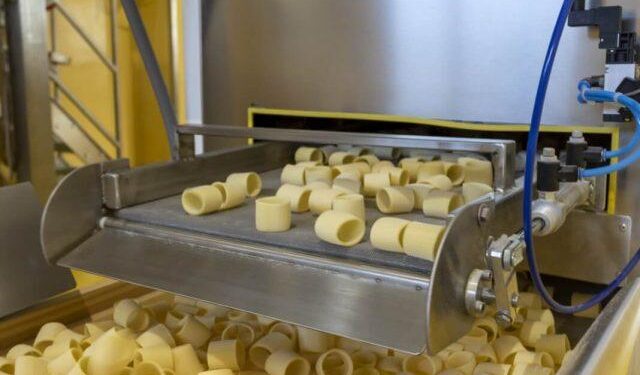Italy has once again solidified its position as the undisputed leader in pasta production and exports, according to the latest report released by the European Commission. The country’s rich culinary heritage, combined with advanced manufacturing techniques and strong international demand, has enabled Italy to outpace all other European nations in both volume and value of pasta exports. This dominance not only underscores Italy’s role as a global pasta powerhouse but also highlights the sector’s significant contribution to the nation’s economy amidst a highly competitive market.
Italy Leads Europe in Pasta Production Setting New Export Records
Italy has solidified its position as the continent’s foremost pasta manufacturer, outpacing all other European countries with remarkable growth in both production and exports. Recent figures released by the European Commission highlight Italy’s unwavering dominance, recording a historic increase in output that meets soaring global demand. This surge underpins Italy’s reputation not only as a culinary icon but also as a powerhouse in food manufacturing, capitalizing on its deep-rooted pasta heritage and cutting-edge production technologies.
The country’s export prowess is equally impressive, with shipments extending far beyond Europe’s borders. Key markets have shown heightened appetite for Italian pasta varieties, contributing to a new export valuation peak. Key factors fueling this success include:
- Innovative packaging tailored for extended shelf life and convenience;
- Investment in sustainable agriculture ensuring premium durum wheat quality;
- Strategic partnerships across international distributors and retailers.
| Year | Production (Million Tons) | Export Value (‚ā¨ Billion) |
|---|---|---|
| 2021 | 3.8 | 2.1 |
| 2022 | 4.2 | 2.5 |
| 2023 | 4.6 | 2.9 |
Economic Impact of Italy’s Pasta Industry on Global Markets
Italy continues to solidify its status as a global powerhouse in pasta production, driving significant economic benefits both domestically and internationally. The pasta sector alone generates billions in revenue annually, supporting thousands of jobs across manufacturing, agriculture, and logistics. Italian pasta’s reputation for quality and authenticity fuels a robust export market, with key trading partners spanning Europe, North America, and Asia. This expansive reach has amplified Italy’s influence on global food trends, positioning the country as an indispensable supplier in the international pasta supply chain.
The economic ripple effect extends beyond direct sales, underpinning a range of related industries and bolstering Italy’s trade balance. Key factors contributing to this impact include:
- Export growth: Italian pasta exports increased by over 10% in the past year, outpacing competitors.
- Value chain integration: From wheat farmers to packaging specialists, the industry’s interconnected sectors thrive.
- Innovation and sustainability: Investments in eco-friendly practices enhance global market competitiveness.
| Region | Italian Pasta Export Value (USD Billions) | Annual Growth Rate (%) |
|---|---|---|
| Europe | 3.4 | 8.2 |
| North America | 2.1 | 12.5 |
| Asia | 1.7 | 15.0 |
Experts Recommend Strengthening Supply Chains to Sustain Growth
To maintain its dominant position in the global pasta market, Italy must prioritize the resilience and efficiency of its supply chains. Experts emphasize that investment in advanced logistics technologies and diversified sourcing strategies are crucial to mitigating disruptions caused by external factors like geopolitical tensions and climate change. Building stronger partnerships with local wheat producers and integrating sustainable practices throughout the supply chain can also enhance stability and meet growing consumer demand for traceable, eco-friendly products.
Practical measures outlined by industry analysts include:
- Implementing real-time tracking systems for raw materials
- Expanding cold storage and transport infrastructure
- Increasing stockpile reserves to cushion supply shocks
- Enhancing workforce training in digital supply chain management
These strategies not only protect Italy’s export potential but also ensure the long-term viability of its signature pasta brands in competitive international markets.
| Supply Chain Initiative | Expected Benefit |
|---|---|
| Local Wheat Sourcing | Reduced import dependency |
| Smart Logistics | Improved delivery efficiency |
| Cold Chain Expansion | Preservation of product quality |
| Workforce Training | Enhanced operational expertise |
To Conclude
As Italy continues to dominate the global pasta market, its leadership in production and exports underscores the nation’s enduring culinary heritage and economic strength. The European Commission’s report not only highlights Italy’s unmatched expertise but also signals robust opportunities for growth in the food sector. With demand for authentic Italian pasta showing no signs of slowing, Italy’s position as the world’s pasta capital appears secure for years to come.
















